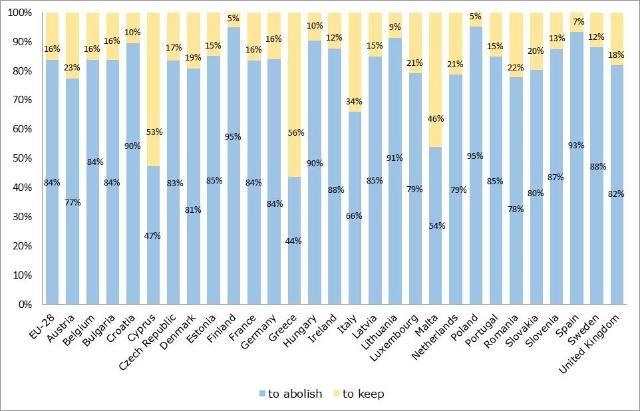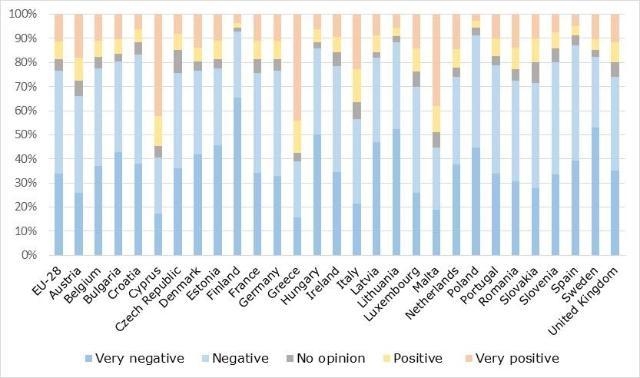
The 2023 DST transition will take place this weekend, when the time in Romania changes and the hands of the clocks are moved forward. On the night of Saturday, March 25 to Sunday, March 26, Romania switches to daylight saving time 2023, and 03:00 becomes 04:00. Thus, Sunday became the shortest day in 2023.
CFR train service notice after 2023 DST
The transition to daylight saving time in rail transport does not change train schedules, CFR Călători said in a Facebook post:
- “The transition to summer time does not change the running of the existing trains, the movement will be carried out according to the schedule provided for in the train running.
- CFR Călători trains will run on current (winter) time until the night of March 25/26 at 3:00 a.m., which will change to 4:00 a.m.
- After 16:00, trains will depart according to the current DST schedule.
- Trains served by CFR Călători that run after 3:00, which becomes 4:00 in the morning, will continue to the destination station, and if the departure time of these trains coincides with the normal departure time between 4:00 and 5:00, the trains will depart in order of priority”.
Between border stations with neighboring countries, which switch to summer time on Sunday, trains will run according to the current schedule, according to the CFR.
Why do they change the time in 2023 and switch to summer time
The transition from winter time to summer time has been heavily debated in recent years, and the European Parliament has recommended that the time change be abandoned starting in 2021.
European Union member states had until 2021 to announce whether they wanted to permanently use summer or winter time. However, for now, the debate remains up in the air.
How did you come to the proposal to abandon the time change? In response to citizens’ initiatives, in February 2018 the Parliament asked the Commission to evaluate the directive on seasonal time change and to make proposals for its changes, if necessary.
After this evaluation, which collected 4.6 million responses, of which 84% were in favor of rejecting the time change, the Commission made a proposal.
- Times are changing, but for how long? A brief history of the initiative, which is actively discussed in the EU
The European Commission explained that the EU’s summer time measures require the time to be changed twice a year to take into account the change in daylight and make the most of the daylight available at a given time. Clocks go forward one hour on the morning of the last Sunday in March and back one hour on the morning of the last Sunday in October to return to standard time.
During the survey, 78% of respondents in Romania decided to refuse the time change.

“Millions of Europeans have used public consultations to express their views. The message is very clear: 84% of them want time to stop changing. We will now act accordingly and make a legislative proposal addressed to the European Parliament and the Council, which will decide together,” Transport Commissioner Violeta Bultz said at the time.
Daylight saving time 2023: time change in all EU countries
Most member states have a long tradition of time-shifting systems, many dating back to the First and Second World Wars or the oil crisis of the 1970s.
Since the 1980s, the European Union has gradually adopted legislation whereby all member states have agreed to coordinate their ways of changing time, abandoning divergent national systems.
Since 1996, all Europeans have been moving their clocks forward one hour on the last Sunday in March and back one hour on the last Sunday in October. The purpose of the EU rules was not to harmonize the time regime in the EU, but to solve the problems caused, especially in the transport and logistics sectors, by the inconsistent application of time changes throughout the year. In parallel with the summer time system in the European Union, the member states have three time zones or standard time. The decision on standard time is a matter of national competence.
Why does time change?
The idea of switching to summer time first appeared in the scientist Benjamin Franklin in 1784. He wrote an essay called “Economic Design” in which he gave some ideas for saving the oil used in lighting lamps, according to the Astronomical Observatory.
One method was to introduce a time period during the summer. While in Paris at the age of 78, he studied how oil lamps produced light and how efficient they were. One summer morning, Benjamin Franklin awoke at 06:00 a.m., surprised by how much light was coming into his room. At first he thought that these were oil lamps that were installed on the streets of Paris. But he noticed that the sun was just rising on the horizon.
Franklin’s idea was picked up by the British builder William Willett. He was also amazed when one summer morning, around 6 o’clock, although it was light outside, all the shutters in the houses were closed. In a 1907 pamphlet, he suggested adding 20 minutes to each Sunday in April and subtracting those minutes from Sundays in September. In 1908, this norm was tried to be introduced in Great Britain, but it was perceived negatively.
Who introduced summer time?
The Germans were the first to introduce summer time, starting in 1916 (from April 30 to October 1). The British followed suit, introducing daylight saving time also in 1916 (between May 21 and October 16). Other countries that have implemented summer time are Belgium, Denmark, France, Italy, Luxembourg, the Netherlands, Norway, Portugal, Sweden, Turkey and Tasmania.
On March 19, 1918, daylight saving time was also introduced in the United States, but it was used only until 1919. Due to the opposition of farmers, the transition to daylight saving time was abandoned. The greatest confusion was created in the United States, where each state had its own rules for the implementation of daylight saving time, and this situation persisted until 1966.
So far, 70 countries have implemented summer time. Daylight saving time is not used in countries on the equator and the Tropic of Capricorn. Two major countries, Japan and China, do not use daylight saving time.
The EU first unified daylight saving time in 1980 to ensure a uniform approach to it within the single market.
As Romania switches to summer time
Daylight saving time was first introduced in Romania in 1932 (from May 22 to October 2). From 1933 to 1940, when this custom was abandoned, daylight saving time was introduced from the first Sunday in April to the first Sunday in October.
From 1941 to 1979, daylight saving time was no longer used. DST was reintroduced in 1979.
In 1979, Romania signed the Convention on Time Zones, and in 1997 – Ordinance no. 20/1997 on the establishment of summer time and official summer time on the territory of Romania, which in article (1) specifies that: “In the summer time schedule, the official summer time is set, shifted one hour ahead of the European Eastern Time, which applies from 3:00 on the last Sunday in March, which becomes 4:00 a.m., to 4:00 a.m. on the last Sunday in October, which becomes 3:00 a.m.
Until 1996 (with a few exceptions), summer time was introduced from the end of March to the end of September.
Since 1997, summer time has been moved from the last Sunday in March to the last Sunday in October.
What effects do people experience when time changes?
An EU survey of 4.6 million people shows that people experience physical and mental discomfort due to the time change. People have difficulty falling asleep or even insomnia.
About 40 percent of respondents said they had trouble concentrating, and a third felt irritable.
Some people complain of severe fatigue after switching to daylight saving time (moving the hands forward one hour), which can be accompanied by a feeling of discomfort and even a headache.
Three-quarters (76%) of respondents consider the twice-yearly time change a “very negative” or “negative” experience. Among the reasons why the respondents want to abandon the time shift, they cite considerations related to the negative impact on health, the increase in the number of accidents on the roads and the lack of energy savings.

Currently, 70 countries have such a system, and the EU adopted the time change in 1980.
However, winter time is considered standard, natural time, which is why it is also called Romanian legal time.
Daylight saving time will be in effect in 2023 in Romania from March 26, when the time will move forward one hour, until October 29, 2023.
Source: Hot News
Ashley Bailey is a talented author and journalist known for her writing on trending topics. Currently working at 247 news reel, she brings readers fresh perspectives on current issues. With her well-researched and thought-provoking articles, she captures the zeitgeist and stays ahead of the latest trends. Ashley’s writing is a must-read for anyone interested in staying up-to-date with the latest developments.